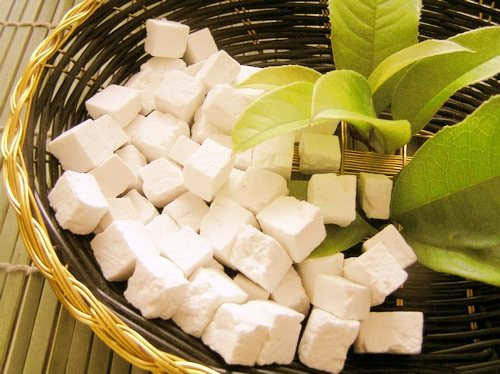Also known as Wolfiporia cocos(Schw.) Ryv.& Gibn in Latin name, poria herb refers to the sclerotium poriae cocos, which is the dried sclerotia of Poria cocos (Schw.) Wolf, a fungus in the family Polyporaceae. This herb has a few other common names, such as Indian buead, China root, Fu Ling Pi, tuckahoe, Fu Shen, hoelen, and so on. As a matter of fact, this is a white fungus on wood, in particular on the roots of Japanese red pine and masson pine in the Pinaceae family. Today it is wild or cultivated, mainly produced in Yunnan, Anhui, Hubei, Henan, Sichuan and other places in China.
The common form of poria fungus is its sclerotium, most of which are in the shape of irregular chunk, sphere, compressiform, oblong, or oval. They are in different sizes, usually less than 10cm in the smaller ones and 20cm to 30cm, even larger, in bigger ones. Skin is grayish brown or dark brown, in the shape of shrinking tumor, white with slightly pin inside, and composed of numerous hyphae. Fruiting body looks like mushroom, 0.5 to 2mm in diameter. It has a special odor.

Main chemical constituents of poria sclerotium are triterpenoids, polysaccharide, ergosterol, caprylic acid, undecanoic acid, lauric acid, dodecenoic acid, palmitic acid, dodecanoate, caprylate, and other elements. Triterpenoids mainly include pachymic acid, tumulosic acid, 3β-hydroxylanosta-7.9(11), 24-TCMLIBien-21-oic acid, pachymic acid methyl ester, tumulosic acid methyl ester, polypenic acid C methyl ester, and so on.
Poria cocos benefits
Poria cocos fungus has long been used medicinally in China, especially in the southern regions. Since ancient times people there are accustomed to grind it into powder as medicine or for health care by consuming it on daily basis. However, then very few family could afford it due to the expensive production cost. Fortunately it is a different story now. Actually this herb is so economical and practical that everyone is entitled its health benefits.

![Diseases, Symptoms, tcm, [tcmwindow.com]](/uploadFile/adImg/2015/11/11/f5cbfcc0-4df5-4646-9b9a-f316651a0199.jpg)





